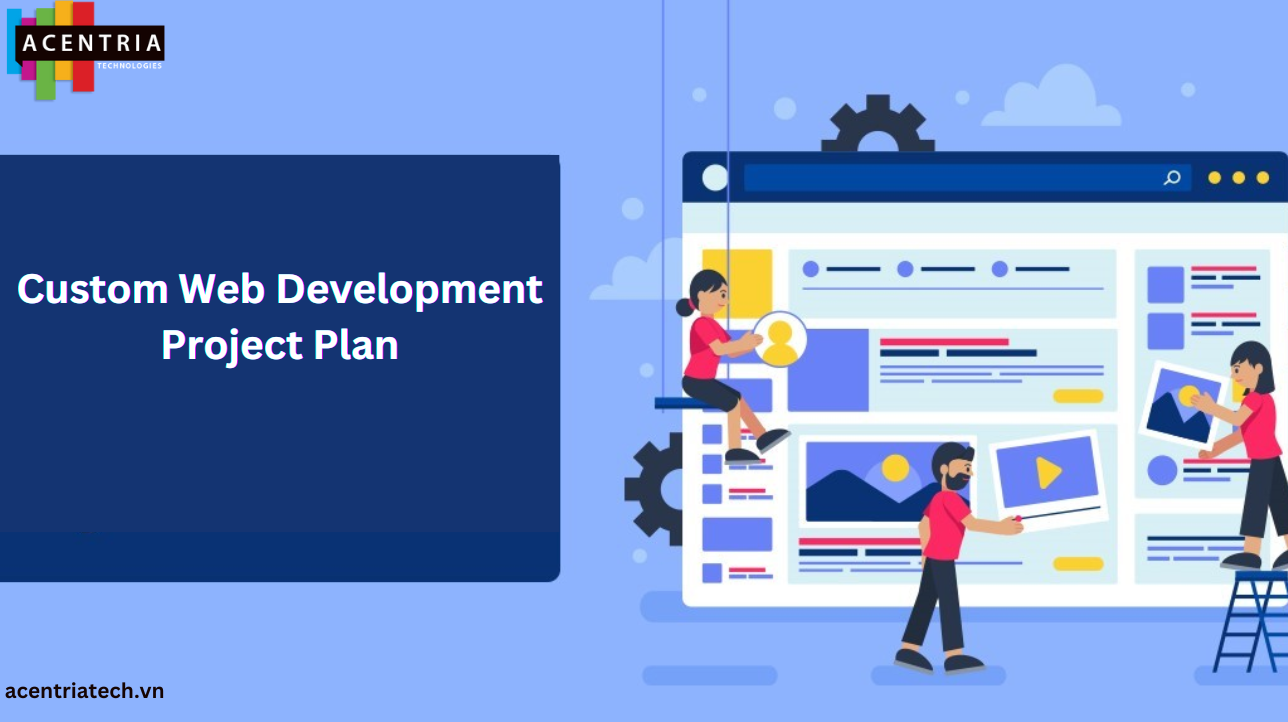How to Create a Custom Web Development Project Plan
In the fast-paced world of digital business, having a structured approach to building a website is crucial for success. Whether you’re working with a web development company in Vietnam or handling the project in-house, a well-thought-out website development project plan is your blueprint for achieving the desired results. A website project plan ensures that the development process runs smoothly, on time, and within budget.
This guide will walk you through how to create a custom web development project plan, focusing on essential components, strategies, and best practices.
Why Do You Need a Website Development Plan?
A project plan for website development acts as a roadmap for everyone involved in the project, from developers and designers to content creators and project managers. It outlines the scope, objectives, timeline, and resources required to bring the website to life. A clear website development plan minimizes the risk of delays, misunderstandings, or unnecessary costs, helping you stay focused on the ultimate goal — delivering a website that meets your business needs.
Steps to Create a Custom Web Development Project Plan
Creating a Web Development Project Plan involves several steps, each one crucial for achieving the desired outcome. Whether you’re building a simple company website or a more complex web application, here’s how to approach it:
1. Define Your Goals and Objectives
Before any coding or design work begins, it’s essential to define the purpose of the website. What is the primary goal of the site? Are you selling products, providing information, or showcasing a portfolio? Your objectives will guide every other step in the process.
For example, a travel website design might prioritize functionality for booking, maps, and travel itineraries, while a company website design might focus on providing clear information about services and contact details. Be specific about what you want to achieve, such as:
- Lead Generation: If your website is for a service-based business, lead generation should be a priority.
- E-commerce: If you’re building an online store, focus on user experience, product pages, and payment gateways.
- Brand Awareness: Your website may aim to reflect and reinforce your brand identity, so design and visuals will play a big role.
Clearly stating these goals upfront ensures that the project stays on track.
2. Choose the Right Team or Web Development Company
To ensure the success of your Web Development Project Plan, you need the right team. If you’re not an expert yourself, hiring a web development company or an agile web development company can save you time and frustration. Whether you choose a reputable website design company or a specific web design and development company, ensure they have experience with your type of project.
A full package website design for businesses might include everything from custom web design to content management and SEO services. Website development services companies often offer specialized expertise in areas like mobile optimization, responsive design, and e-commerce solutions.
If you’re considering outsourcing, web development companies in Vietnam are becoming increasingly popular due to their cost-effectiveness and high-quality deliverables.
3. Create a Detailed Project Scope
One of the first things you should establish is the project scope. A detailed project scope outlines the features, functionalities, and deliverables of the website. It should be specific, measurable, and achievable, and should be agreed upon by all stakeholders.
Here’s what should be included:
- Design Specifications: Include wireframes, mockups, and the visual style of the site.
- Functionality Requirements: Define what features the website will include, such as search functions, contact forms, user authentication, or e-commerce capabilities.
- Technology Stack: Determine the technologies that will be used, such as programming languages (HTML, CSS, JavaScript), CMS platforms (WordPress, Joomla, Shopify), and any necessary third-party integrations (payment gateways, CRM systems, etc.).
A clear scope prevents scope creep and helps the Web Development Project Plan remain focused on its objectives.
4. Develop a Timeline
A website project planner should establish a detailed timeline for each phase of the project. This timeline should include:
- Project Milestones: Key deliverables, such as the completion of the design phase, development of functionality, and website testing.
- Development Phases: Typically broken down into stages like wireframing, design mockups, front-end development, back-end development, and testing.
- Launch Date: A clear deadline for when the website should be live.
If you’re working with an agile web development company, the timeline might follow an iterative model, where features are developed and tested in small increments, with feedback loops incorporated throughout the process.
5. Budget and Resource Allocation
A web development project plan also requires careful budgeting. The website development plan should clearly outline the costs associated with each stage of the project, including design, development, testing, and any third-party services (like hosting or APIs). Additionally, allocate resources to each task — whether it’s time, personnel, or software tools.
Be mindful of the potential need for ongoing costs after the site is launched, such as hosting fees, domain renewal, or continued SEO and maintenance.
6. Choose a Content Management System (CMS)
Selecting the right CMS is critical for long-term success. A CMS allows non-developers to manage content on the website without technical skills. Some of the most popular CMS platforms include:
- WordPress: Ideal for blogs, small businesses, and portfolio websites.
- Shopify: Great for e-commerce and product-based sites.
- Joomla!: Suitable for more complex websites with large databases.
- Drupal: Best for enterprise-level websites that require high customization.
If you’re planning a web application development project, this might involve choosing a more custom CMS or even developing your own content management solution.
7. Design and Development Phases
Once the planning stages are complete, the actual website design and development can begin. During the design phase, you’ll want to:
- Develop high-fidelity mockups and prototypes.
- Conduct user testing to ensure the design is intuitive and functional.
- Make adjustments based on user feedback.
Once the design is approved, the Web Development Project Plan team will begin coding the site, focusing on creating a responsive design that looks great on both desktops and mobile devices.
8. Testing and Quality Assurance
Before launching your site, it’s essential to conduct thorough testing. Test the website across multiple devices and browsers to ensure compatibility. In addition to functional testing, consider performing:
- Load Testing: Ensure the website can handle the expected traffic.
- Security Testing: Protect sensitive data by identifying vulnerabilities.
- User Acceptance Testing (UAT): Allow the project stakeholders to test the website and ensure it meets the requirements.
9. Launch and Post-Launch Monitoring
Once everything is tested and ready, you can proceed with the website launch. However, your responsibilities don’t end there. After launch, monitor the website’s performance and user feedback to ensure that everything works as expected. Be prepared to make adjustments, especially if any bugs or usability issues are discovered.
10. Ongoing Maintenance and Optimization
A website is never truly “finished.” Continual updates, optimizations, and maintenance are necessary to keep the site functional, secure, and relevant. This could involve updating plugins, improving page load speeds, refreshing content, or optimizing for SEO.
Conclusion
A website project plan is essential for ensuring that the development process is efficient and successful. From setting clear goals to selecting the right team and creating a detailed project scope, every step matters in delivering a quality website. Whether you are working with a top website development company or handling the project in-house, the goal is to create a website that not only meets your business needs but also provides a seamless user experience.
By following these steps and collaborating with experienced web design companies and web development companies, you can ensure that your website development project stays on track and delivers a high-quality, professional result.




